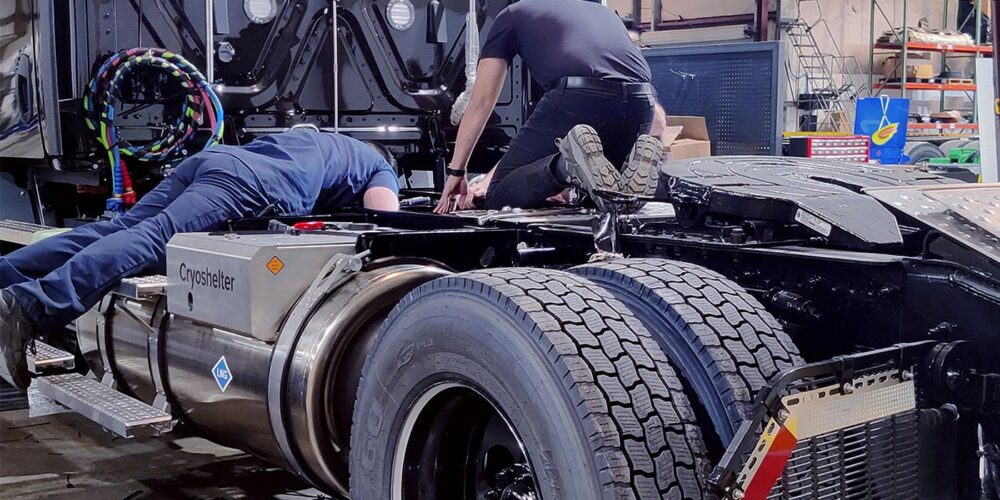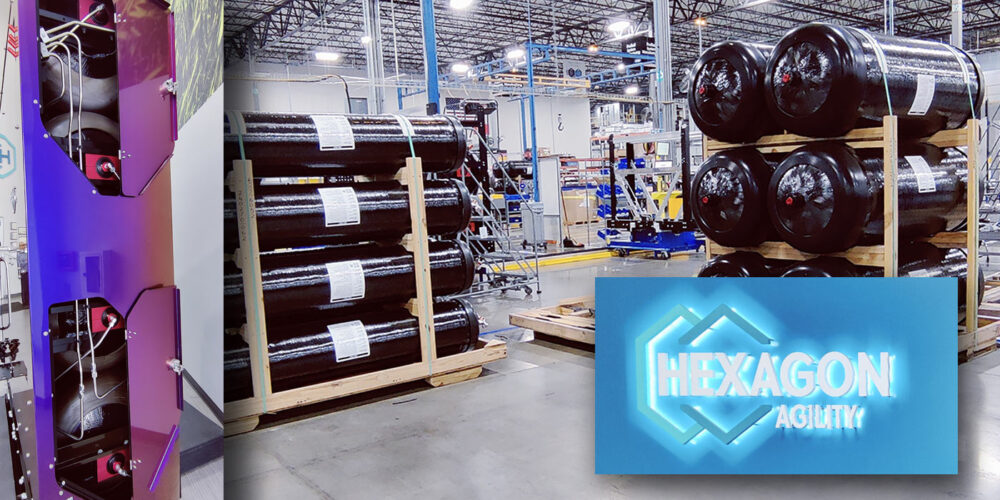Setting foot into the Hexagon Agility facility in Salisbury, N.C., you’re met with several truck components that send the same message: A back-of-cab CNG holding system (dubbed the ProCab) and a bench made from a decommissioned CNG cylinder. As you move farther in, artful photographs of children blowing on dandelions adorn meeting room walls, symbolizing a wish to watch future families grow up in a clean and healthy world. It’s a theme that’s growing across trucking industry narratives, but there are many decarbonization roads that could lead there. Touring the Hexagon Agility plant and talking with executives reveals one road that could mean a clean energy future is attainable for Class 8 trucks, and sooner than you might think.
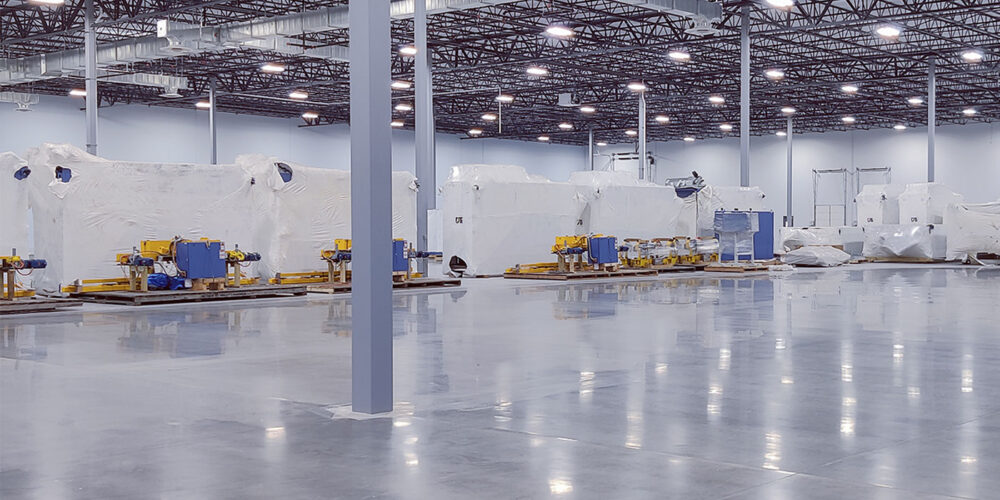
Hexagon Agility has already been working to supply CNG fuel systems for vehicles running the Cummins X12, 12-liter fuel-agnostic engine. Currently, the company is installing equipment in a 113,000-sq.-ft. expansion to prepare for increased orders tied to the upcoming launch of the Cummins X15N 15-liter fuel-agnostic engine. As Eric Bippus, executive vice president of sales and systems development at Hexagon Agility put it: the power of the X15N, which can be fueled by renewable CNG, will “change everything.”
Why natural gas?
This next bit is everyone’s favorite fact about natural gas. Biomethane comes from, say it with me: cow farts. Officially, that’s known as “dairy biogas,” and the same chemicals are also released by food waste, landfills and wastewater operations. If you do nothing, those gasses rise into the atmosphere and contribute to climate change, or it can be collected before that happens, ran it through a digester and distilled into a usable fuel.
Not only are emissions from renewable natural gas (RNG) negligibly low, by obtaining the gas from a renewable source that would otherwise be harmful means the effect can be carbon negative, according to CARB. Additionally, Hexagon Agility tells me that compressed natural gas (CNG) vehicles already meet EPA Phase 3 standards.
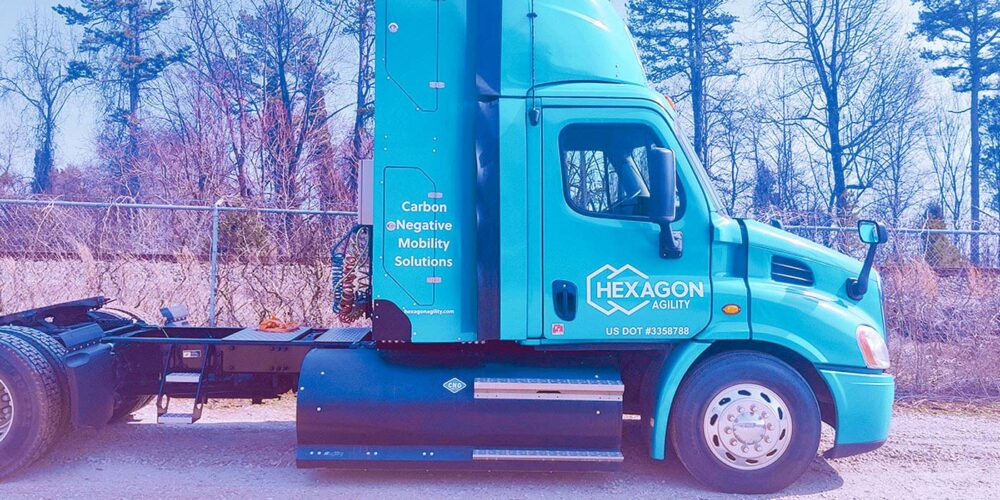
Enter Hexagon Agility, which produces CNG storage and fuel systems for various medium- and heavy-duty applications. For medium-duty, refuse vehicles and buses have been running on CNG for years, but its newest equipment is aimed at Class 8 trucks. Hexagon Agility offers the ProCab sits behind a semi’s cab and holds up to 175 diesel gallon equivalent (DGE), and the ProRail—two tanks below the cab, behind the front axle, that hold up to 60 DGE each. The company says the ProCab and the Pro Rail together will give an estimated range of roughly 1,200 miles on a Class 8 truck.
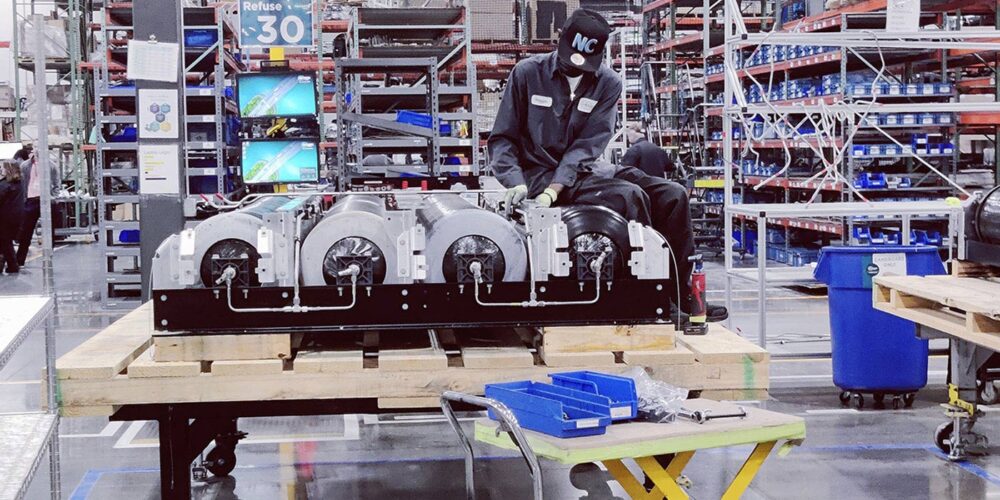
Both the ProCab and ProRail hold CNG cylinders made out of carbon fiber, polymer and resin, which weigh 70% less than steel tanks, according to Hexagon Agility. Those cylinders are then connected to operate as one large fuel tank. Hexagon Agility produces and certifies these cylinders, and both Vice President of Operations Don Ruddy and Chief Executive Officer Hans Peter Havdal noted that the tank designs were tested for operational and crash safety in many different scenarios. If a tank is damaged, Hexagon Agility has a recertification program to ensure it is safe before going back into service.
Speaking of service
Service is another one of Hexagon Agility’s big selling points offers. The company explained that they work with clients on designs that best suit their needs, from range requirements to how the fuel is carried on the vehicle and even paint matching. The facility is capable of creating some eye-catching color schemes, while also stocking seven shades of white to keep things practical.
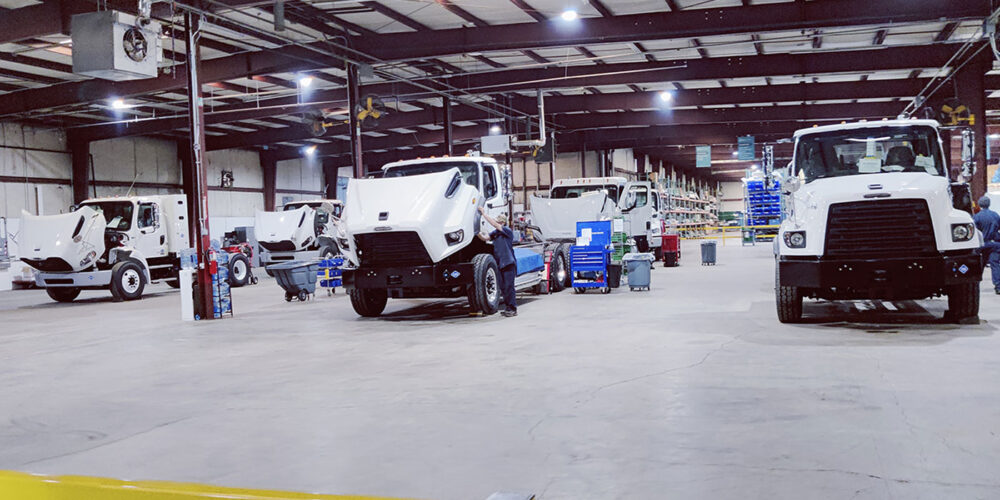
Installation is another area where the company looks to make things efficient. One of the larger companies that calls on Hexagon Agility is UPS, and if you’ve got a fleet that size, the CNG cylinders and equipment can be installed at the OEM facility. Smaller operations may find it easier to send the trucks to N.C. to have the installation done, and even local operations have a dedicated service bay to make sure a small owner-operator isn’t waiting for service behind a 500-plus truck order.
Fleets are no stranger to natural gas powertrains. Earlier iteration of CNG powertrains struggled to receive necessary service support. Hexagon Agility says its Fleet Care program is designed to quell those quarrels by offering full support including technical support, a training academy, mobile fleet repair and a catalog of parts at the ready.
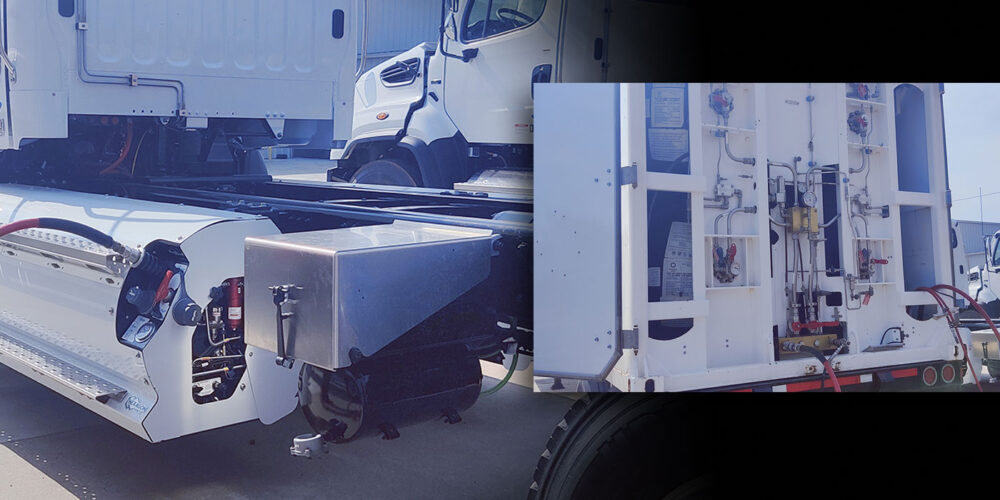
Additionally, if there’s not a CNG pipeline near you, Hexagon Agility has a delivery system called a Mobile Pipeline. A specially equipped trailer is loaded with extra large CNG cylinders to bring to your site. The model available on the day of my tour was a 32 ft. long trailer, capable of fueling about 15 Class 8 trucks. The Mobile Pipeline is equipped with both slow- and fast-fill nozzles, Hexagon Agility says the slow-fill version takes a little over 15 minutes to fuel up, while the big bore version cuts that down to about five minutes.
CNG cylinders and the secondary lifecycle
Hexagon Agility explained that its tanks have been tested to operate for up to 20 years, outlasting the life cycle of many fleet trucks. Those old tanks have some options. If the cylinder still has many usable years left, the company can inspect and recertify it for use on a secondary market. If the cylinder isn’t usable, Hexagon Agility says the tank can be cut up and used in non-automotive applications.
Today’s alternative to diesel for greater decarbonization?
To paraphrase the message Hexagon Agility left me with: RNG is a sustainable energy source, CNG vehicles are here, and they becoming more powerful. The company says that it doesn’t make sense to wait years or decades to adopt alternative fuels, when a technology that can make an industry-wide impact is available now. Ultimately, Hexagon Agility plans for fleet market where RNG and fuels like electricity and hydrogen operate in different applications, while maintaining a goal of minimizing climate change.
